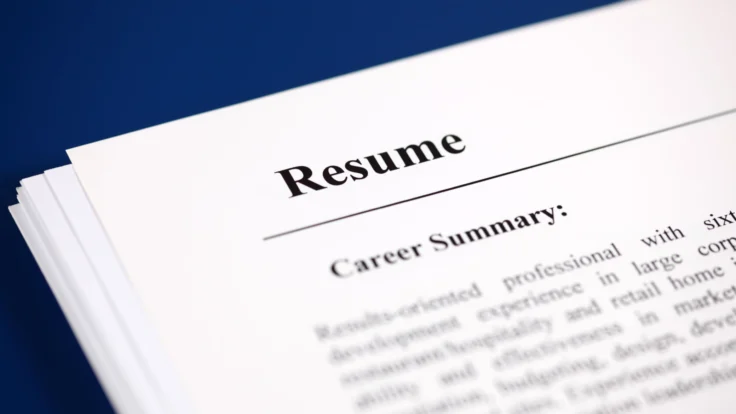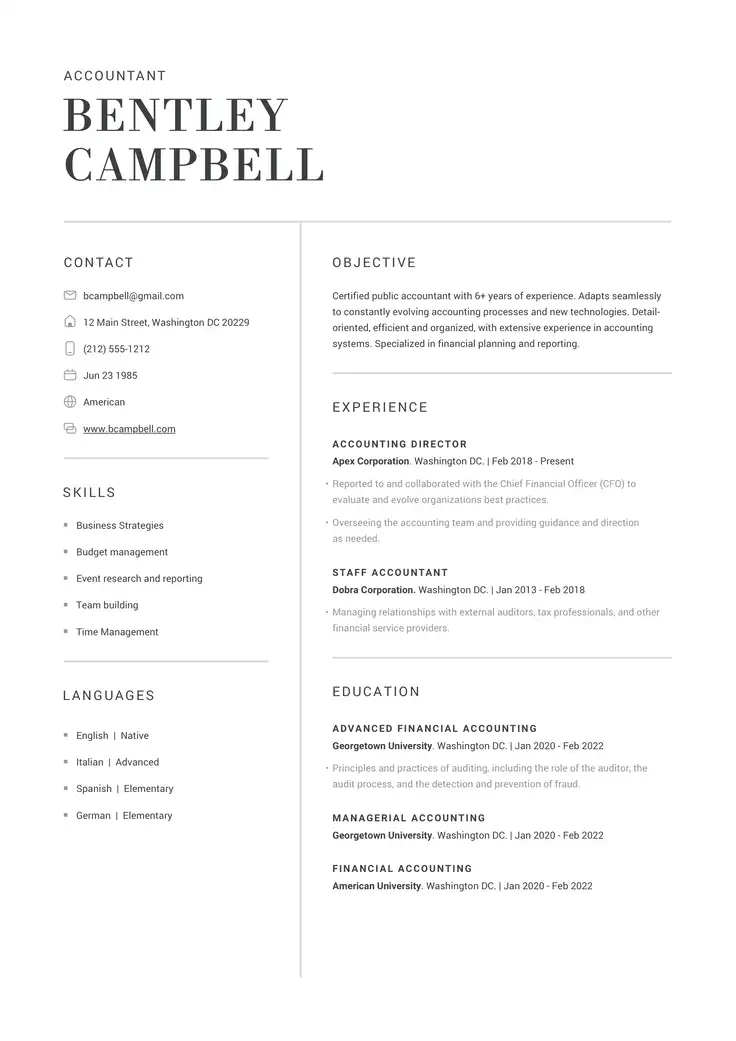Resume section headings are one of the first things prospective employers see on your resume. As they are written in a larger font size and are often in bold, they are designed to stand out.
As employers generally scan resumes in a matter of seconds, it’s crucial to make a positive first impression. For this reason, it’s important to make sure the headings on your resume are clear, error-free, and attractive.
This guide on how to write resume headings will explain how to avoid the most common pitfalls of the job and give you tips on how to nail your resume section headings.
Designing a resume can be time-consuming. Nowadays, many people prefer to use resume builders as a way of quickly achieving professional-looking results.
Organizing Your Resume: How To Choose the Right Section Heading
First, you may be wondering what sections should be on a resume? Skills, Education, and Experience are the most common–and vital–resume category headings. For most applicants, these three sections work together to paint a nearly complete picture of your background and abilities.
When you are deciding on the right section headings, choose a professional font and use consistent formatting for all your headings.
You may also want to include additional information in other sections. We’ll talk about these more below.
Especially if you’re employing additional, optional sections, though, how can you make sure all the information is in the right spot? Using our resume builder can help you to do this. You’ll be prompted to enter the correct information under the right headings. The result will be a resume that looks good while honestly displaying your abilities to the best advantage.
How to Order the Sections of Your Resume
Now that you know what headings should be on a resume, let’s discuss the order in which these resume section titles should appear. Depending on your profile and experiences, you may want to adapt the structure of your resume to highlight the most relevant information first.
Typically, your contact information, summary, skills, education, and work experience come first–after all, they are the essential sections every hiring manager expects to see. However, their exact order can vary. For example, you may decide that your skills are more vital than your experience because you’ve learned “new collar skills” through non-traditional means.
Similarly, you may place your work experience above your education or vice versa, depending on which is more relevant to the job at hand.
Finally, consider including a resume summary at the top of your resume. This is especially true if you want to highlight a specific detail or accomplishment that might otherwise be overlooked. The top third of the first page of your resume is crucial for setting a positive tone for the rest of the resume.
After the above sections are in place, you can add additional sections if relevant. These might include:
- Volunteer Experience / Civic Engagement
- Hobbies and Interests
- Languages
- Licenses and Certifications
- Professional Organizations
- Publications
If you include more than one optional section, again place the most important–most relevant–ones first.
Miscellaneous Section in Your Resume
Above, we’ve considered some of the standard sections to add to a resume. But what if you have other pertinent skills or experiences that could add weight to your resume but don’t quite fit other sections? That’s where miscellaneous sections come in.
Maybe you have a mishmash of volunteerism, side gigs, personal projects, awards, publications, and the like, and you need to conserve space by containing them under a single section. After all, a heading should have more than one entry. In this case, you can list them together under a miscellaneous section.
Try to pinpoint a common thread that binds the experiences together and highlights their relevancy to the position you’re applying for.
Protip
Don’t call your miscellaneous section Miscellaneous; it’s best to give each new section its own relevant heading.
This term may make readers think the bulleted points that follow are less important or even entirely unimportant.
Instead, you can choose from several professional-sounding resume topic headings:
- Projects
- Notable Experience
- Relevant Additional Information
- Patents
Tips for making your resume headings stand out
You want employers to notice your resume headings. Put them in a slightly larger font and consider using bold. Your resume should be written in 11 or 12-point font. Consider using 13 or 14 for your headings.
Keep it simple
You want your resume headings to be noticed, but you also want your resume to give the right impression. It should look professional and polished to show you’re a serious job candidate.
Avoid gimmicks and use a clear font such as Arial or Georgia. If you have an eye for design and are applying for a job in the arts, you can consider using more creative resume headings.
Avoid long resume headings
Writing longer headings makes them less clear. Try to use only 1 or 2 words. Headings need to make what they contain clearer, nothing more. Resume heading examples: ‘Work Experience,’ ‘Qualifications,’ ‘Honors and Awards,’ ‘Skills,’ and ‘Core Expertise.’
Don’t use vague headings
Keep your headings short, but make sure they’re clear. Don’t just write ‘Work’ or ‘History’. Make sure the heading contains enough information for the reader to understand what the section contains instantly. ‘Work History‘ and ‘Work Experience‘ are both concise and clear.
Don’t overcrowd your resume
Less is more on a resume. You should use headings to make the most important parts stand out. You should only have headings that include at least 3 items. There’s no point in having a section which only has 1 item. In these cases, it’s better to combine sections. Including a ‘Miscellaneous‘ section is an option. Your education, work experience, and skills sections should be the most prominent.
Use a resume template
Resume templates are the easiest way of producing top-quality resumes, which maximize your chances of reaching the first interview stage. There are numerous templates to choose from, and they are quick to edit and adapt for each job application.
Whether you’re writing an experienced professional resume or an entry-level resume, there are different styles and layouts to meet your needs.
There are many different things to think about when writing a resume. It’s still the most powerful tool you have at your disposal when you’re looking for a job, so make sure you perfect it as much as you can. Read this guide on how to write a resume for more tips on crafting a winning resume.
Related Posts


